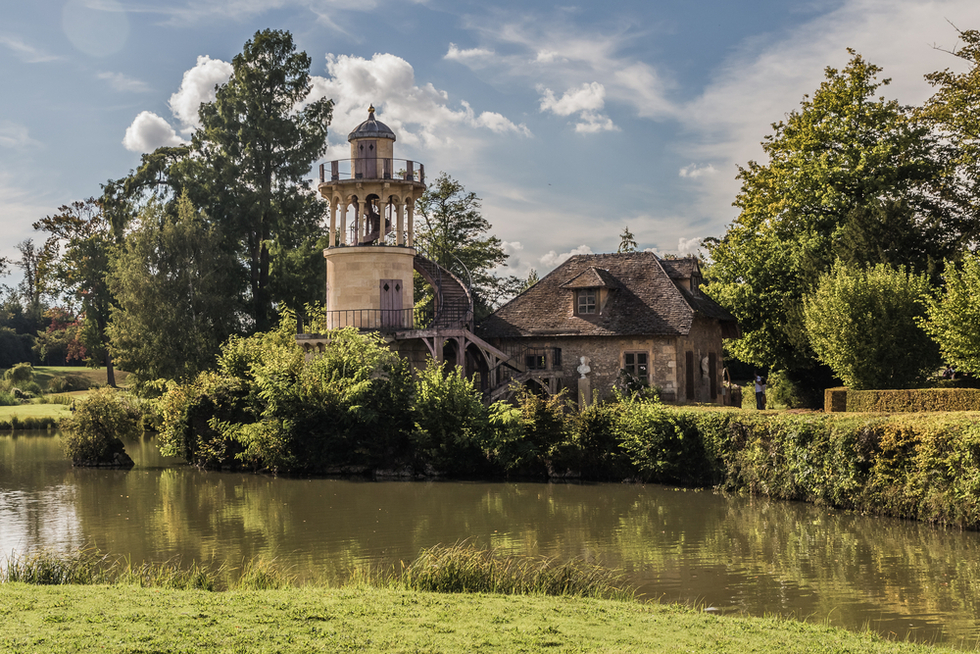A long walk across the garden (or reachable by the little train; 7.50€) will take you to the Grand Trianon (Grand Pavilion), decked out in pink-and-white marble. At this point, you will be in the Domaine de Marie Antoinette (if you don’t have a Château passport or museum pass, you’ll pay a separate ticket to get in). Le Vau built a Porcelain Trianon here in 1670, covered with blue-and-white china tiles, but it was fragile and soon fell into ruin. So, in 1687, Louis XIV commissioned Hardouin-Mansart to build the Grand Trianon. Traditionally, it has been a place where France has lodged important guests, though de Gaulle wanted to turn it into a weekend retreat. Nixon once slept here in the room where Mme de Pompadour died. Mme de Maintenon also slept here, as did Napoleon. Throughout the 20th century it was used for official state receptions and as a residence for notable guests such as John and Jackie Kennedy, General de Gaulle, and Queen Elizabeth II. Although the Grand Trianon is not really linked to the story of Marie Antoinette, it is worth a brief visit. This small marble palace consists of two large wings connected by an open columned terrace from which there is a delightful view of the gardens. The furniture and decor dates mostly from the Napoleonic era.
Gabriel, the designer of place de la Concorde in Paris, built the Petit Trianon in 1768 for Louis XV. Louis used it for his trysts with Mme du Barry. When he died, Louis XVI presented it to his wife, and Marie Antoinette adopted it as her favorite residence, a place to escape the rigid life and oppressive scrutiny at the main palace. When the queen had finished decorating the manor in the latest fashions (many of the current furnishings, including a few in her rather modest bedchamber, belonged to the ill-fated queen), she set to work creating an entire world around it, including a splendid English garden, several lovely pavilions, a jewel-like theater, and even a small hamlet, complete with a working farm and a dairy, where she and her friends would play cards and gossip, or just go for a stroll in the “country.”
Rousseau's theories about recapturing the natural beauty and noble simplicity of life were much in favor in the late 18th century, and they prompted Marie Antoinette to have Mique build her the 12-house Le Hameau (Hamlet) on the banks of the Grand Trianon Lake in 1783. She wanted a chance to experience the simplicity of peasant life—or at least peasant life as seen through the eyes of a frivolous queen. Dressed as a shepherdess, she would come here to watch sheep being tended and cows being milked, men fishing, washerwomen beating their laundry in the lake, and donkey carts bringing corn to be ground at the mill. The interiors of the hamlet buildings cannot be visited, but the surrounding informal landscaping—in obvious contrast to the formality of the other gardens at Versailles—and bizarre origins make views of their exteriors one of the most popular attractions here.






 About our rating system
About our rating system


